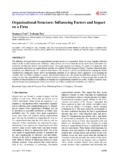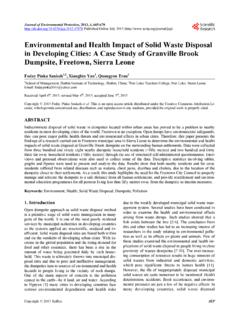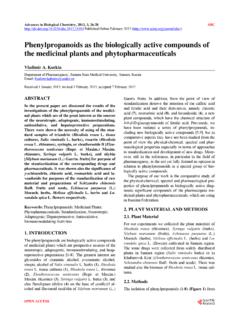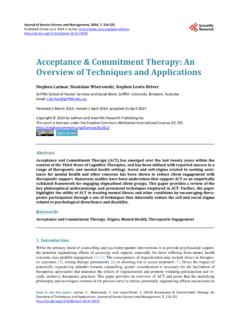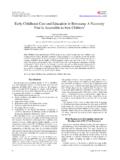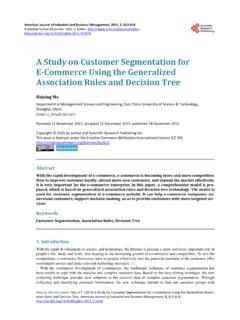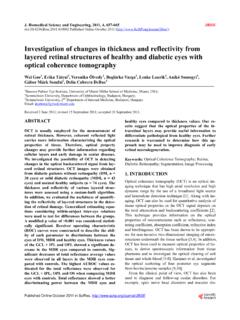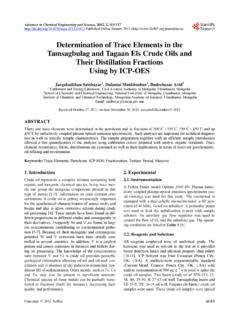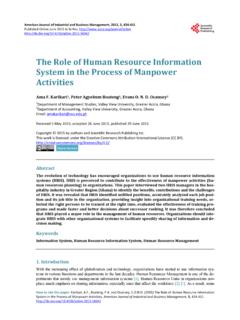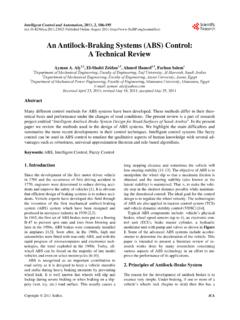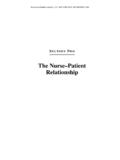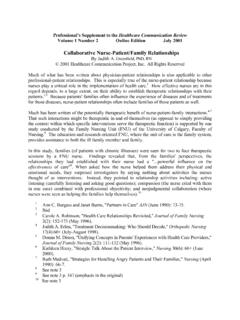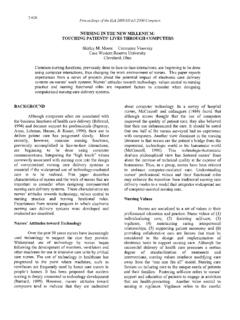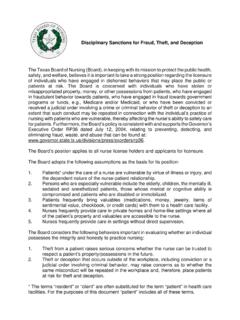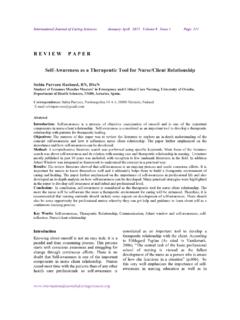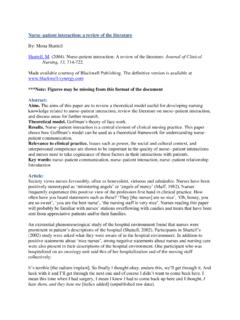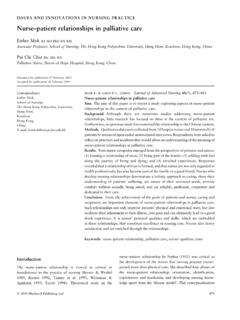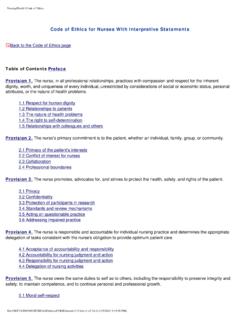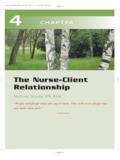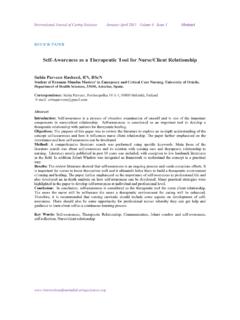Transcription of Patients’ experiences of trust in the patient-nurse ...
1 Open Journal of Nursing, 2015, 5, 195-209 Published Online March 2015 in SciRes. How to cite this paper: R rtveit, K., Hansen, , Leiknes, I., Joa, I., Testad, I. and Severinsson, E. (2015) patients Experi-ences of trust in the Patient- nurse relationship A Systematic Review of Qualitative Studies. Open Journal of Nursing, 5, 195-209. patients experiences of trust in the Patient- nurse relationship A Systematic Review of Qualitative Studies Kristine R rtveit1*, Britt S tre Hansen2, Ingrid Leiknes3, Inge Joa4, Ingelin Testad5, Elisabeth Severinsson6 1 Stavanger University Hospital, Stavanger, Norway 2 Department of Health Studies, Faculty of Social Sciences, University of Stavanger, Stavanger, Norway 3 Centre for Movement Disorders, Stavanger University Hospital, Stavanger, Norway 4 Division of Psychiatry, Regional Centre for Clinical Research in Psychosis, Stavanger University Hospital, Stavanger, Norway 5 Regional Centre for Age-Related Medicine (SESAM), Stavanger University Hospital, Stavanger, Norway 6 Department of Research, Stavanger University Hospital, Stavanger, Norway Email: Received 27 February 2015; accepted 15 March 2015.
2 Published 20 March 2015 Copyright 2015 by authors and Scientific Research Publishing Inc. This work is licensed under the Creative Commons Attribution International License (CC BY). Abstract Aims and Objectives: To report a synthesis of the literature on the meaning of trust in the context of patients experiences of nursing. The review question was How do patients describe the meaning of trust in the nursing relationship ? Background: trust is essential in nursing as it has the potential to create opportunities for the human being to gain faith, hope and meaning in life as well as open up for new experiences . trust is an interpersonal and essential element of all patient- nurse relationships and requires nurses to create a trusting relationship with the patients . Design: Systematic qualitative literature review. Methods: Systematic searches were conducted for the period January 2002 to De-cember 2012, updated in January 2014.
3 20 papers were included. Results: Four categories emerged: Attitudes related to trust , indicating that trust is fundamental and existential; experiences of trust , concerning how trust can be sensed; The patient- nurse relationship , revealing the qualities of the person who creates trust ; and Where trust occurs, illuminating the contextual relevancies of trust . Conclusions: patients experiences of trust in nursing are dependent on the nurses knowledge, level of commitment in the dialogue to creating and developing the relationship and contextual issues. Im-plications for nursing practice: Reflection on a trusting relationship with the patient is necessary for a deeper conceptual understanding of trust in nursing. Clinical nurse researchers nurse supervisors, managers and nurse educatorsshould discuss different areas of trust during nursing supervision and focus-group meetings as well as with nursing graduates to ensure that nurses develop knowledge of how to create a trusting patient- nurse relationship .
4 *Corresponding author. K. R rtveit et al. 196 Keywords Patient- nurse relationship , Patient experience , Qualitative Literature Review, trust 1. Introduction trust is essential in the relationship between the healthcare professional and patient [1]-[3]. trust as an inter-personal and essential element of all patient- nurse relationships was the clearest result in a literature review of trust and trustworthiness. trust was viewed as a dynamic process evolving over time where reliance on others, risk and fragility were identified as basic attributes [4]. trust between patient and nurse is essential for reducing patients anxiety, and enabling them to regain a sense of control [5]. Caring is based on relationships and an ethical stance that have to be learned in everyday practice. By her/his actions and practical competence, the nurse demonstrates a standard for care that allows the patient to trust her/him [6].
5 The phenomenon of trust is related to power and present in all caring contexts; it has an impact on whether the patients directions expands or restricts [7]. When vulnerable patients are unable to meet their own needs, they must trust in the good will of nurses, who often interact intimately in their lives [8]. There are many definitions of trust [9]; as both a process and an outcome in clinical and organisational con-texts [10], between families and professionals [11], as well as in interdisciplinary literature [12]. Previous litera-ture has pointed out four key features of trust : What it is, why it matters, on what it is based, and the danger of trust , concluding that management is important for generating trust in the healthcare system [13]. One literature review discuss four factors that influence patient trust ; 1) potential for shame and humiliation, 2) the power im-balance in the relationship , 3) failure of understanding of how the patient is suffering from the illness and 4) failure of understanding of the patients suffering due to the treatment [1].
6 The results reveal that patients are best cared for in a setting where disease is understood, medical problems treated and that the patient is accom-panied through the illness experience . Such a setting requires an appreciation of the challenges to the experience of trust resulting from the special characteristics of the patient- nurse relationship . trust has the potential to create opportunities for the human being to gain faith, hope and meaning in life as well as open up for new experiences [14]. When a person trusts another person it means opening up for an action and expecting the other (trustor) to act in accordance with his/her (trustee s) wishes, interests or will. trust is often defined as the opposite of power. trust , choice and power are important areas in mental healthcare as pa-tients expect to participate in the treatment process.
7 The power issue between patients and nurses can cause some patients not to avail of healthcare services [15]. One study explored the limitations of communication the-ory by considering the different perspectives of researchers, clinicians, patients and teachers, revealing that re-searchers focus on communication mechanics and techniques while patients seek relationships in which they experience trust , the right amount of autonomy, caring and expertise (p. 272). They argue that nurse educators and leaders should ensure that nurses develop attitudes and knowledge as a basis for the creation of a trusting patient- nurse relationship . Reflection on the conceptual understanding of trust in nursing is essential [16]. trust is an important aspect of nursing and has been the focus of nursing theory and research. There is a need for theoretical research on trust in nursing with an international perspective.
8 A synthesis of available evidence might provide a starting point. A concept analysis of trust provides a greater understanding of its role in the pa-tient- nurse relationship [17]. However, there is a gap in the understanding of the meaning patients attribute to trust and how the development of trust should be facilitated based on empirical studies [18]. The large body of literature on trust within nursing lacks depth, research evidence and focuses on the potential benefits of a pa-tient- nurse relationship [12]. The present review was conducted to contribute a deeper clinical understanding of patient-oriented phenomena in order to enhance nursing care [19], by means of a synthesis of available qualita-tive evidence of patients experiences of trust and its meaning in nursing. 2. Aim The aim of this review was to report a synthesis of the literature on the meaning of trust in the context of pa-tients experiences of nursing.
9 The review question was How do patients describe the meaning of trust in the nursing relationship ? K. R rtveit et al. 197 3. Methods A systematic review was performed [20] on qualitative evidence to expand knowledge of the meaning of trust from the patient perspective, thus allowing a more exploratory and substantive approach to the phenomenon [21] [22]. The authors are six nurse researchers working in different clinical settings (intensive care, psychiatric care, movement disorders, dementia, geriatric care and the research department) at a University hospital on the West coast of Norway. A thematic data-driven analysis was performed and the findings of different studies were summarised under thematic headings. The analysis was performed in steps, the first of which involved identifying themes from the findings of each study after which we sorted the themes by summarizing the main point and organising them in-to categories.
10 Finally, we developed the descriptive themes by discussing, naming and comparing them in order to ensure that they were robust. The process was carried out bearing the review question in mind [20] [23]. Codes were referred to as meaning units, categories as a group of content with shared commonality and themes as the thread of underlying meaning (p. 107) [23]. Patient trust was reflected on and discussed in relation to the aim of the study. Inclusion Criteria The inclusion criteria were: the patients perspective of the patient- nurse relationship , trust as an outcome, qua- litative studies, English language, last 10 years: Search Strategy A search was made in the PubMed, CINAHL, PsycINFO and Embase databases covering the period January 2002 to December 2012, updated in January 2014 using nurs* AND patient trust * AND experience *.
